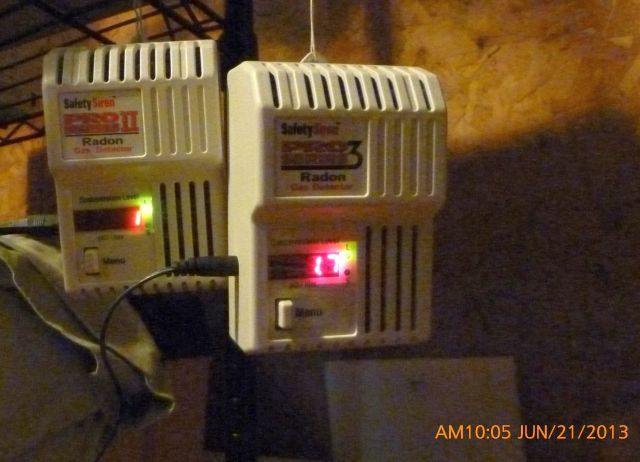
The sumps are starting to dry up again. Meaning the water table has gone down,
and the radon gas flow is going to decrease.

1.7 pCi/L with an unsealed sump, is excellent, considering what it was before.
The location of the blower in another room, means there is no real
breeze blowing past the detectors.
So, there is no error introduced by air flow.
But it seems obvious there has to be a general slow air flow from the cold
floor slab, towards the equipment room and the suction of the blower.
I've read that radon is normally not a problem in a ventilated basement.
I wonder if radon reduction is really a lot easier than it looks.?.
Maybe drilling holes in the slab, and trying to suck radon gas out of the soil
isn't really needed in a lot of cases??
It's been warm outdoors, but the basement temperature isn't increasing as much as I expected..
~~~
I just realized that a sump pump can move radon, thus lowering the average.
(This old sump is located within 3 feet of the airpump input).

That dump pipe on the lower right, dumps the water from the 'hot' sump.
When the pump cycles, the last 15-20 seconds are dry. Meaning it's pumping air.
Radioactive air..
Now dry weather means the pumps are not running.. We'll see if the radon level goes back up some..